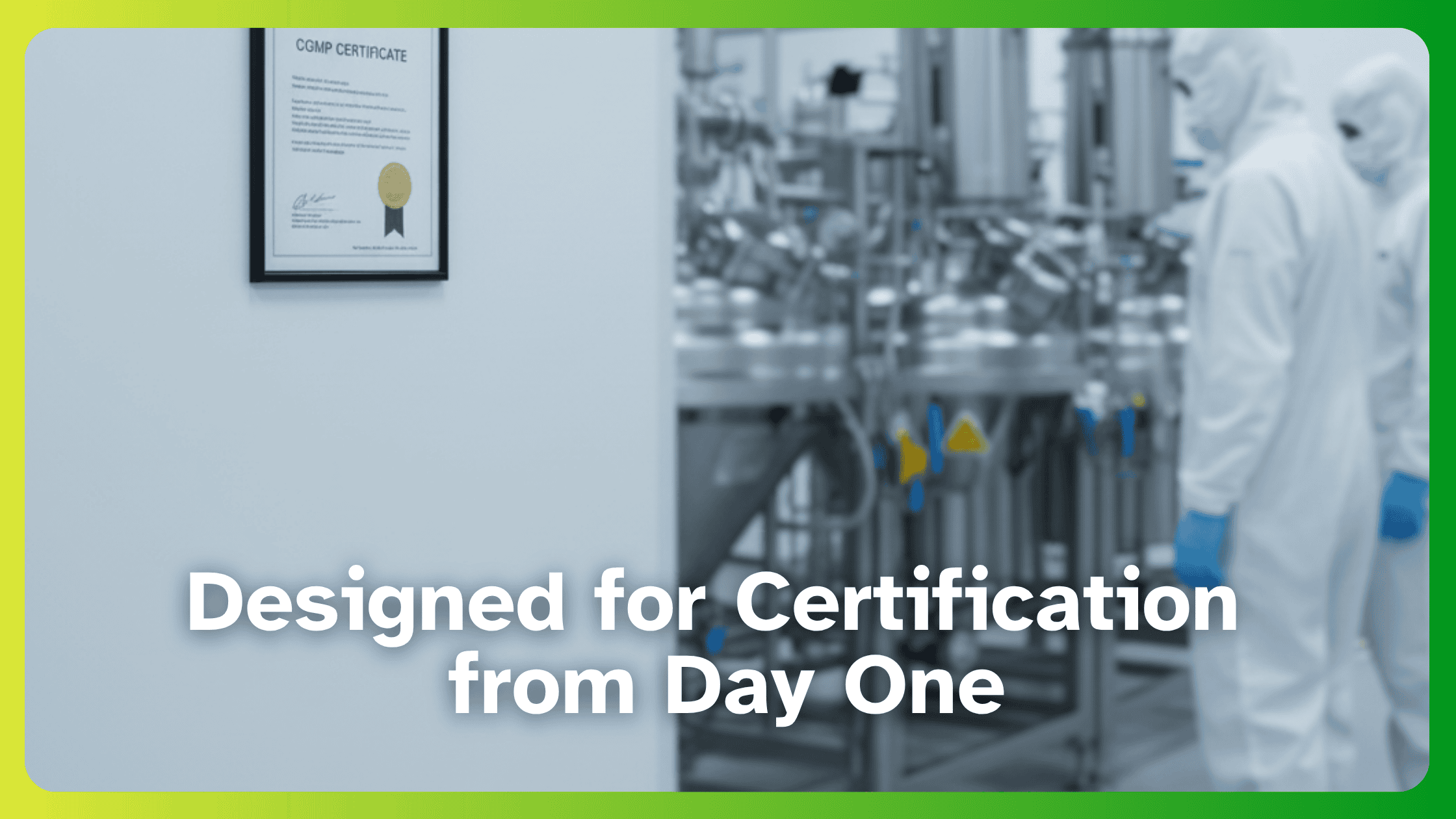Publisher
India Pharma Outlook
published at
May 14, 2025
Missed the Schedule M Deadline? How Pharma Projects Can Recover Fast and Stay Audit-Ready
The deadline for submitting Schedule M upgrade plans has passed. Despite an extension, only a fraction of the ~10,000 Indian pharma firms submitted their GMP upgrade roadmap to CDSCO. This isn't just a lapse—it signals widespread readiness gaps. The urgency for teams managing pharma builds or validations now shifts from planning to action.
Understanding Schedule M Compliance
Schedule M is a set of mandatory Good Manufacturing Practice (GMP) requirements defined under India’s Drugs and Cosmetics Rules, 1945-Schedule M lays out operational and infrastructural GMP standards for Indian drug manufacturers. It ensures product safety and consistency across dosage forms. It applies to both domestic and export-oriented facilities. It lays out standards for pharmaceutical factory design, equipment, hygiene, air quality, documentation, and quality control. Every licensed drug manufacturer in India must comply with Schedule M to legally operate. It’s India’s core regulatory benchmark for GMP, similar to EU GMP or US FDA 21 CFR parts.
Key Revisions in Schedule M (2023): What Changed
In 2023, CDSCO revised Schedule M to better align with WHO-GMP and global standards. The revision affects facility design, risk control, utilities, documentation, and electronic compliance.
New Environmental Control Standards
- Mandated Class D cleanrooms in key areas.
- HEPA-filtered airflow systems for cross-contamination control.
Enhanced Focus on QRM and Annual Product Review
- Requires formal risk-based evaluations.
- Periodic product quality reviews (PQR) for every formulation.
Mandatory Electronic Documentation and PQR
- Stronger emphasis on audit trails and digitised SOP compliance.
The government gave firms a chance to submit a plan and upgrade by the end of 2025, only if they submitted their plan by May 11, 2025.
Missed the Deadline? CDSCO Inspections Are Coming
By May 11th, manufacturers were required to submit a Schedule M upgrade plan to secure an extended compliance window through December. Fewer than 100 firms did so. The Health Ministry has directed state regulators to engage with local manufacturers, indicating that risk-based inspections are imminent. With nearly 5,000 units reportedly non-compliant, many now face license suspension or operational halts.
CDSCO is unlikely to offer another extension. Industry groups pushed for more time, but no official reprieve has been granted. In short, inspections are coming, and teams that failed to file will now face heightened scrutiny, not leniency.
Why Most Pharma Facilities Are Still Behind on Schedule M
Missing the deadline isn’t just about documentation. It reflects broader issues across project functions—engineering, validation, and resource planning:
- Gap Assessments Unfinished: Many firms struggled to complete the required section-wise analysis across premises, equipment, utilities, and documentation.
- Design Gaps Underestimated: Focus remained on SOPs, not on physical upgrades. Teams underestimated HVAC retrofits, water systems, and zone classification needs.
- Shortage of Skilled Manpower: MSMEs cited a lack of validation engineers and qualified QA staff to complete gap analysis or lead upgrades.
- Submission Bottlenecks: CDSCO required online submissions through a new portal. Many firms delayed or avoided the unfamiliar process.
Most delays stemmed from capacity gaps in execution, not ignorance of the regulation. Compliance is a cross-functional mandate, and most teams weren’t aligned.
What CDSCO Expects During Inspections in 2025
With the Schedule M upgrade deadline passed, CDSCO inspections in 2025 are expected to intensify, especially for facilities that missed the plan submission. The Central Drugs Standard Control Organisation has already outlined a risk-based inspection protocol that determines how and where audits will occur. Here’s what pharma teams should prepare for:
CDSCO’s Risk-Based Inspection Criteria
CDSCO uses a structured framework to identify high-risk manufacturers based on factors such as:
- Previous regulatory history or audit outcomes
- Scale of production or market reach
- Type of product handled (e.g., sterile, high-potency APIs)
- Reported adverse events or recall history
Facilities that skipped submitting a GMP upgrade roadmap are likely to fall under high scrutiny. Many of these audits will be unannounced.
Common Non-Compliance Issues Seen in 2024
CDSCO and state FDA inspectors have already observed recurring issues across facilities, including:
- Missing or outdated HEPA filtration systems
- Water purification loops are not validated or regularly sanitised
- Incomplete or absent qualification documentation (IQ/OQ/PQ)
- Absence of a Quality Risk Management (QRM) process
- Inconsistent or manual batch manufacturing records
These gaps not only delay regulatory clearance but also pose product safety risks.
What Inspectors Look for Beyond Documentation
Passing a CDSCO inspection today goes beyond just having clean paperwork. Inspectors increasingly focus on:
- On-floor operator knowledge and SOP adherence
- Real-time, traceable data integrity systems
- Cleanroom zoning and HVAC logic (not just layout drawings)
- Proper training records for new or revised procedures
- Evidence of continuous improvement and CAPA closure
Any discrepancy between documentation and on-ground practices will be flagged. Readiness must be visible, verifiable, and sustained.
Top 3 GMP Gaps Found in Schedule M Facility Audits
Based on early observations and project engagements, here are the most critical lapses:
1. Inadequate Environmental Control (HVAC)
Many firms still operate with 5-micron filters and non-classified rooms. Revised norms now mandate Class D conditions, HEPA filters, and clean zoning logic. The site risks major audit observations if AHUs or airflow validations are outdated.
2. Outdated Utilities and Water Systems
CDSCO now expects validated water generation, loop circulation, and monitoring. Older RO systems or dead-leg piping without revalidation may not pass. The same applies to compressed air and clean steam.
3. Documentation and Training Lags
SOPs, PQ protocols, and training content haven’t kept up. Quality systems must reflect Annual Product Reviews, Risk Management, and change control aligned with the upgraded systems.
Q2 2025 Compliance Roadmap: What Pharma Project Teams Must Do Now
Even post-deadline, action now can mitigate audit risk. Here's your fast-track roadmap based on Gov. guidelines:
- Complete an Internal Gap Analysis
If it wasn’t done before May 11, do it now. Benchmark each area—HVAC, water, layout, equipment, QMS—against revised norms. - Secure Budget Support
Turn compliance into a board-level priority. Frame the risk of shutdown or non-clearance for exports vs. the cost of facility upgrades. - Prioritise No-Regret Projects
Start work on clearly non-compliant issues: filter upgrades, zoning barriers, and qualification of water/utility systems. - Update SOPs & Train Staff
Align documentation with actual upgrades—Retrain operators on new gowning, cleaning, and equipment protocols. - Engage Regulators Transparently
Communicate progress to the state FDA proactively. Show good faith and preparedness before audits begin.
Inotek’s GMP-Centric Approach to Post-Deadline Pharma Compliance
Inotek supports pharma companies post-deadline with CQV-led upgrades and design remediation. Our team works across design, qualification, and documentation, ensuring inspection readiness beyond just SOP-level fixes.
✔️ CQV Execution
We qualify upgraded HVAC, water systems, and lab utilities with full IQ/OQ/PQ protocols tailored to revised GMP norms.
✔️ GMP Design Remediation
Our engineers identify and fix layout flaws, zoning issues, and contamination control gaps before audits happen.
✔️ Documentation + Training
We update validation master plans, calibration logs, and SOPs, and train your team on real GMP application, not just theory.
✔️ Audit Simulation
Our experts run mock audits with CDSCO-style walkthroughs. You’ll know exactly where you stand—and what needs fixing—before regulators arrive.
Ready to future-proof your pharma facility?
Talk to our experts today and see how Inotek can make compliance your competitive advantage.
FAQs
What is Schedule M compliance?
Schedule M compliance refers to adherence to India’s Good Manufacturing Practices (GMP) standards for pharmaceuticals, covering facility design, equipment, documentation, and quality systems.
What happens if a pharma company misses the Schedule M deadline?
Missing the Schedule M submission deadline may trigger CDSCO inspections, risk of license suspension, and restrictions on domestic and export operations.
How can Inotek help with Schedule M compliance?
Inotek provides end-to-end support, including CQV services, GMP remediation, SOP alignment, and audit simulations to help pharma facilities become inspection-ready.
What does CDSCO look for during inspections?
CDSCO inspectors assess GMP compliance, SOP implementation, HVAC and water system validation, operator readiness, and risk management practices during Schedule M inspections.




